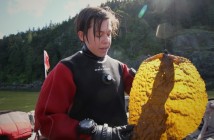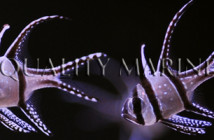
Immediately after the release of the Disney movie “Finding Nemo”, there was a huge demand for clown fish and people clamored to their local fish stores wanting to get an aquarium with the cute fish that their children had seen in the movie. Most of them didn’t even realize that they would have to create an ocean-like environment for their Nemo and some actually believed that they could take one home in a goldfish bowl!
I recently spoke with our friend Scott at Fishy Business to ask if there had been a similar reaction to the release of the new Disney movie “Finding Dory”. After listening to a few anecdotes about his own personal experiences (many like the ones above) about Nemo, Scott related that the new movie hadn’t generated the same interest as the first. He opined that maybe many of the people had learned after trying to obtain a “Nemo” for their child, or that they had simply availed themselves of the plethora of information online today and learned that this was a saltwater fish.
All of this led me to look a little further into the Disney phenomenon and share what I could learn with our readers.
Dory’s scientific name is Paracanthurus hepatus which is a species of Indo-Pacific surgeonfish. It is the only member of the genus Parancthurus. Many common names have been attributed to Dory’s species including Regal tang, palette surgeonfish, blue tang (leading to confusion with the Atlantic Iyana Acanthurus coeruleus), royal blue tang, hippo tang, flagtail surgeonfish, Pacific regal blue tang, and blue surgeonfish.
Dory’s range is broad, but she is common nowhere. Dory can be found throughout the Indo-Pacific. Dory is seen in reefs of East Africa, Japan, Samoa, New Caledonia, and the Great Barrier Reef.[1] The regal blue tang is one of the most common and most popular marine aquarium fish all over the world. They live in pairs, or in a small groups of up to 10 or 12 individuals. These fish reach sexual maturity at 9–12 months of age.
There are stark contrasts between the Dory of Disney fame and Dory in the real world. For example, in the movie, Dory has two nurturing and caring parents who are distraught when she goes missing and seek to find and be reunited with their offspring. But would a blue tang have caring, nurturing parents, as the story suggests? The answer is definitely not. Blue Tang parents do not care for their young and it would be entirely unlikely that they would ever meet them except by accident. Blue Tang spawn in the water column. Their spawn are then carried away in the ocean currents and deposited in the coral reef where the “fry” hatch and are on their own from the very beginning. They initially feed on plankton until reaching adult size and then become omnivorous. They benefit the coral reefs by feeding on algae which grows on the corals and could eventually smother them if allowed to grow unchecked.
Whatever the reaction caused by the Disney phenomenon, it is unlikely to endanger this species thanks to wise retailers that care about conservation. At present, Paracanthurus hepatus is considered to be of low vulnerability and is not an endangered species being ranked LC (least concern) by the World Conservation Union. However the classification, these fish have not been successfully breed to adulthood in captivity. Unless you are a seasoned hobbyist, it might be best to leave Paracanthurus hepatus in it’s natural habitat.





